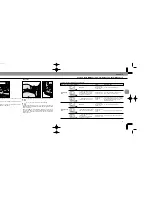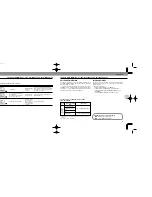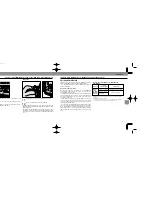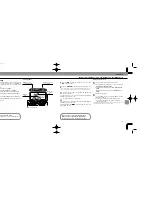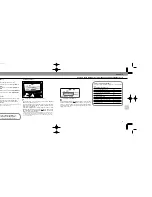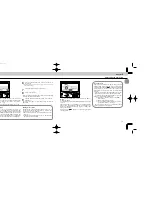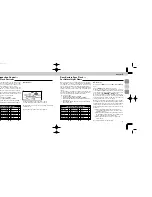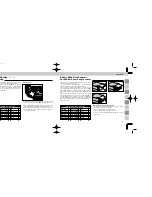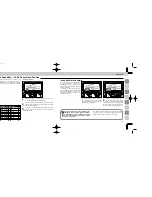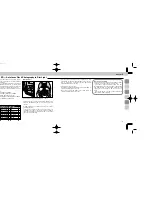
85
84
Chapter
3
Manual Flash
i
Mode — Manual Light-Output Control
With the SB-26’s flash mode selector at
i
, you can per-
form manual flash photography.
For manual flash photography, it is important to choose
an appropriate aperture and shooting distance to achieve
your desired effect. To help approximate these variables,
you can use the SB-26’s LCD panel and control buttons as
a “calculator”, or use “guide numbers” (see page 118).
To enhance this feature, the SB-26 lets you manually
adjust flash output levels from full power (1/1) to 1/2, 1/4,
1/8, 1/16, 1/32, 1/64, and FP1 and FP2.
Before proceeding:
E
ATTACH SPEEDLIGHT TO CAMERA.
E
TURN ON BOTH SPEEDLIGHT AND CAMERA.
E
USE APERTURE-PRIORITY AUTO OR MANUAL EXPO-
SURE MODE.
E
USE SINGLE-SERVO AUTOFOCUS (S or A) OR MAN-
UAL FOCUS (M).
E
USE SINGLE-FRAME SHOOTING (S) FILM ADVANCE
MODE.
F5
E
F-601
M
/N6000
E
FE2
E
F90X/N90s
E
F50-Series/N50
E
FG
E
F90-Series/N90
E
F-401x/N5005
E
Nikonos V
E
F70-Series/N70
E
F-501/N2020
E
F3-Series
E
F4-Series
E
F-301/N2000
E
F2-Series
E
F-801/N8008
E
F-401/N4004
E
FM2
E
F-801s/N8008s
E
F-401s/N4004s
E
FG-20
E
F-601/N6006
E
FA
E
APPLICABLE NIKON SLR MODELS
Non-TTL Auto Flash
A
Mode
7
Fully depress shutter release button to fire flash.
8
Recheck ready-light to see if it is blinking.
If ready-light
Â
blinks for a few seconds after shooting,
flash has fired at maximum output but the light may have
been insufficient.
Reconfirm shooting distance and, if necessary, move closer
to subject or select a wider aperture to compensate under-
exposure.
Exposure compensation
Exposure compensation in Non-TTL Auto Flash mode
is achieved by purposely setting a different aperture
value on the camera (actually on the lens in most
cases) than on the SB-26.
Use an aperture 1/3 to one stop smaller for an
entirely dark background (low reflectance). For back-
grounds that include a highly reflective object, use an
aperture 1/3 to one stop larger.
Note that shooting distance range indication
/
corresponds to the aperture value set on the SB-26 —
not on the camera.
In general, you may want to take a series of pictures
using exposure bracketing.
SB-26 (E) 03.1.14 7:16 PM Page 84

